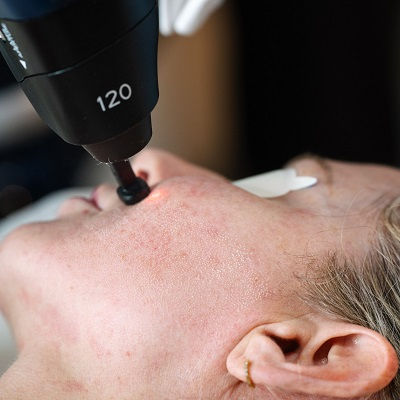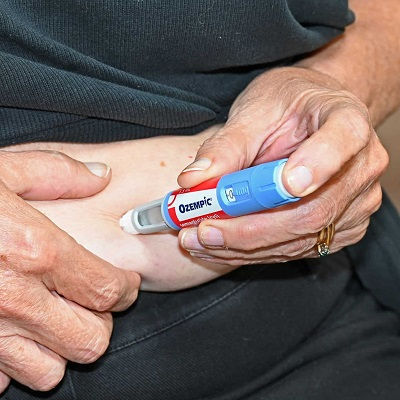Comparing Fractional CO2 Laser With Erbium Laser
- aliza khan
- Jun 2
- 4 min read
When considering advanced skin rejuvenation, patients often weigh the benefits of different laser technologies. For individuals exploring the Best Fractional CO₂ Treatment Oman, understanding the differences between fractional CO2 laser and erbium laser is crucial for making an informed decision. Both lasers offer remarkable results, but each has unique features that make it suitable for specific skin concerns and types. This in-depth guide will delve into how these two treatments compare, from their mechanisms and benefits to their safety profiles and recommended aftercare.
Understanding the Basics:
What is Fractional CO2 Laser?
Fractional CO2 laser is a powerful resurfacing treatment that uses carbon dioxide energy to create micro-injuries in the skin, stimulating collagen production and encouraging skin renewal. This process results in improved skin texture, reduced wrinkles, and diminished scars. The treatment is especially popular among those seeking the best fractional CO2 treatment Oman because of its effectiveness in addressing a range of skin issues.
What is Erbium Laser?
Erbium laser, on the other hand, operates at a different wavelength and targets water within the skin. It vaporizes the superficial layers with less thermal damage compared to CO2 lasers, making it a gentler option for certain skin types and concerns. Erbium lasers are commonly used for fine lines, superficial scars, and overall skin tone improvement.

Key Differences Between Fractional CO2 and Erbium Laser:
Depth of Penetration:
Fractional CO2 laser penetrates deeper into the dermis, making it effective for more severe wrinkles, deeper scars, and significant skin laxity. This deeper reach also means a slightly longer recovery period compared to erbium laser.
Erbium laser is ideal for superficial resurfacing, treating fine lines and mild textural issues. It removes thinner layers of skin with minimal heat spread, which often results in less downtime.
Thermal Damage and Healing Time:
Fractional CO2 laser treatments tend to generate more heat, leading to greater collagen stimulation but also more redness and swelling. The healing process typically takes about 7-10 days, depending on the intensity of the treatment.
Erbium laser generates less heat, causing less redness and swelling. Healing time is usually shorter, often between 4-7 days, making it an attractive option for those seeking quicker recovery.
Skin Types and Safety:
Fractional CO2 laser is generally considered safe for lighter skin tones, although newer devices have settings that can treat darker skin with caution to avoid hyperpigmentation.
Erbium laser is more suitable for a broader range of skin tones because it causes less thermal damage, reducing the risk of post-inflammatory hyperpigmentation in darker skin.
Precision and Customization:
Fractional CO2 laser allows for deep treatment of both superficial and deeper skin issues, often in a single session. It’s highly customizable, enabling practitioners to adjust settings based on patient needs.
Erbium laser offers precision for more superficial concerns and can be tailored to focus on specific areas with minimal risk of over-treating.
Benefits of Each Treatment:
Benefits of Fractional CO2 Laser:
Collagen Stimulation: Deep thermal energy promotes robust collagen remodeling, improving skin firmness.
Effective for Deep Wrinkles and Scars: Suitable for severe textural issues, including acne scars and deep lines.
Longer-Lasting Results: Because of its deeper reach, results can be more dramatic and longer-lasting.
Benefits of Erbium Laser:
Minimal Heat Damage: Reduces the risk of pigmentation issues and shortens healing time.
Precise Superficial Treatment: Perfect for fine lines, mild sun damage, and overall tone.
Quick Recovery: Less downtime means faster return to normal activities.
Combining Both Lasers: Is It Possible?
In some advanced practices, both fractional CO2 and erbium lasers are used together or in sequence to achieve optimal results. Fractional CO2 can be used to treat deep wrinkles and scars, while erbium laser refines the superficial layers, creating a comprehensive rejuvenation effect.
The Treatment Experience:
What to Expect During a Session:
A typical fractional CO2 laser session involves applying a topical anesthetic to minimize discomfort. The procedure lasts between 30-60 minutes, depending on the treatment area. The erbium laser session is similar but may require less anesthesia due to its gentler nature.
Post-Treatment Care:
After fractional CO2 treatment, patients may experience redness, swelling, and a sunburn-like sensation for several days. Peeling is common as the skin heals. Strict sun protection and gentle skincare are essential.
Following erbium laser treatment, the skin usually feels dry and tight, with some redness that resolves faster than after CO2 treatments. Moisturizing and sun protection are also key during recovery.
How to Choose the Right Treatment:
The choice between fractional CO2 laser and erbium laser depends on individual skin concerns, desired outcomes, and lifestyle factors like downtime tolerance. Consulting with a qualified skincare professional is vital to determine the most appropriate approach for your unique needs.
Frequently Asked Questions:
1. Which treatment is better for acne scars?
Fractional CO2 laser is typically more effective for deeper acne scars because it penetrates further into the dermis, stimulating significant collagen production.
2. How many sessions will I need?
Most patients see noticeable improvement after one session, but 2-3 sessions spaced a month apart are often recommended for optimal results, regardless of the laser type.
3. Is there a risk of pigmentation issues?
Fractional CO2 carries a higher risk of pigmentation changes, especially in darker skin types, while erbium laser has a lower risk due to its reduced thermal damage.
4. Can I wear makeup after treatment?
It’s best to avoid makeup until the skin has healed completely, usually about a week after erbium laser and 7-10 days after fractional CO2.
5. Which treatment is less painful?
Both treatments involve some discomfort, but erbium laser is generally considered to be less painful because it causes less heat buildup in the skin.
Conclusion:
Understanding the differences between fractional CO2 laser and erbium laser empowers patients to make informed decisions about their skincare journey. While fractional CO2 offers deep rejuvenation ideal for severe textural concerns, erbium laser provides a gentler option with quicker healing times. For those seeking the best fractional CO2 treatment Oman, consulting with an experienced professional ensures a tailored plan that aligns with your skin goals and preferences.



Comments